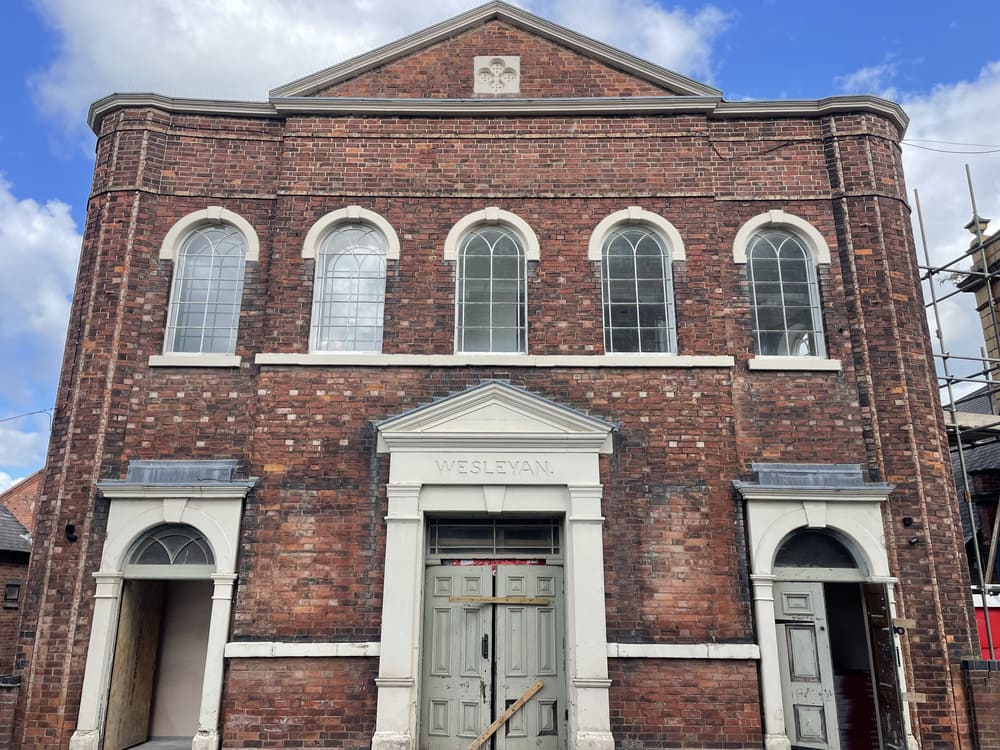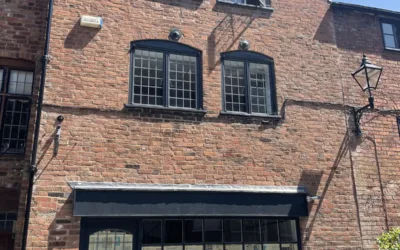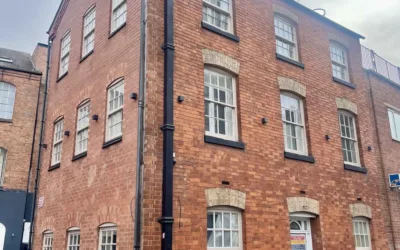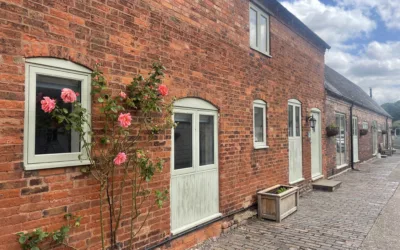Prominent Derbyshire renovation project benefits from Automist Misting system.
Client:
Property development company, Derbyshire
Location:
Three ground floor apartments in Swadlincote, Derbyshire
Scope:
Installation of Automist misting systems to safeguard the escape route from inner rooms within a heritage building undergoing extensive renovation into high quality town centre apartments.
Introduction:
The Wesleyan Methodist Chapel, Swadlincote, Derbyshire has a rich history dating back to 1816 when the original chapel was built. Over the years, the chapel underwent several alterations and enlargements, with significant remodelling occurring in 1863 at a cost of £2,000. This phase of renovation saw the chapel rebuilt to accommodate up to 800 people and included the incorporation of elements from earlier phases, such as cast-iron windows and panelling.
The chapel played a central role in the community, with services reflecting Wesley’s ideology of gender segregation in architecture. Following further alterations in 1891-94, including the creation of a decorative internal lobby, the chapel continued to serve the South Derbyshire Methodist circuit until at least 1955. Today, while the chapel’s role has evolved, its heritage and significance as a community landmark remain integral to Swadlincote’s history.
The former Methodist church building has recently undergone extensive renovation into high quality apartments. Means of escape from the ground floor apartments was not possible by the ground floor windows due to their height and size. As a result, the bedrooms of the ground floor apartments were deemed to be inner rooms. To meet building regulations (Approved Document B – Fire Safety in buildings) and ensure safe escape from the inner rooms, the kitchen-living areas of the apartments were installed with Automist misting systems.
Challenges:
The heritage building presented inner rooms without direct access to exterior spaces, posing challenges for safe evacuation in case of a fire.
Preserving Heritage Aesthetics:
It was crucial to select a fire misting system that effectively safeguarded the escape route without compromising the aesthetics of the newly refurbished space.
Solution:
The chosen solution involved installing an Automist misting system, renowned for its efficiency in extinguishing fires while minimising water usage, ideal for heritage renovations, building regulations approval and fire safety in serviced accommodation.
Customised Design:
A detailed assessment of the building and ground floor apartments was conducted to determine suitability of the water supplies and optimal positioning of Automist nozzles. A tailored Automist system design was produced to ensure comprehensive coverage of the open plan escape route while ensuring that the placement of the misting system nozzles where aesthetically pleasing.
Installation:
Fire Mist installed the Automist misting system hoses and cables at first fix stage, prior to walls and ceiling being fitted with plasterboard. Once the project was nearing completion, Fire Mist attended site to install the Automist components, including the Automist pump, controller and wall mounted misting nozzles.
Results:
With Automist installed to the open plan escape route of each apartment, the means of escape from the inner rooms was deemed suitable for building regulations approval.
The discreet, wall mounted Automist nozzles blend seamlessly into the open plan kitchen/living areas of each apartment.
The installation of Automist misting systems proved to be a cost effective solution for the building regulations approval of this project.
How does the Automist commission process differ from other fire suppression systems?
Automist is unique in many ways, this includes the commissioning and servicing process.
Programming the automist system involves pairing all wall mounted electronic nozzles to the controller and to their respective ceiling mounted smoke detectors.
Part of the Automist commissioning process involves triggering the system to simulate a full activation.
A collector is added to the nozzle when water is pumped through the network of high pressure hoses by the high powered Automist pump. System pressures are measured to ensure that they are within manufacturers recommendations and to ensure that the pump is operating correctly.
Once all nozzles have been tested to verify their operating pressures, the high pressure hoses are purged with high pressure air to remove water and reduce the risk of legionella.
When all water has been removed from the high pressure hoses, the Automist system commissioning is complete and the system is ready to scan for fire in the event of smoke being detected at the ceiling mounted smoke detectors.
Contact us today for help with your open plan project building regulations approval and fire suppression requirements for your serviced accommodation.



